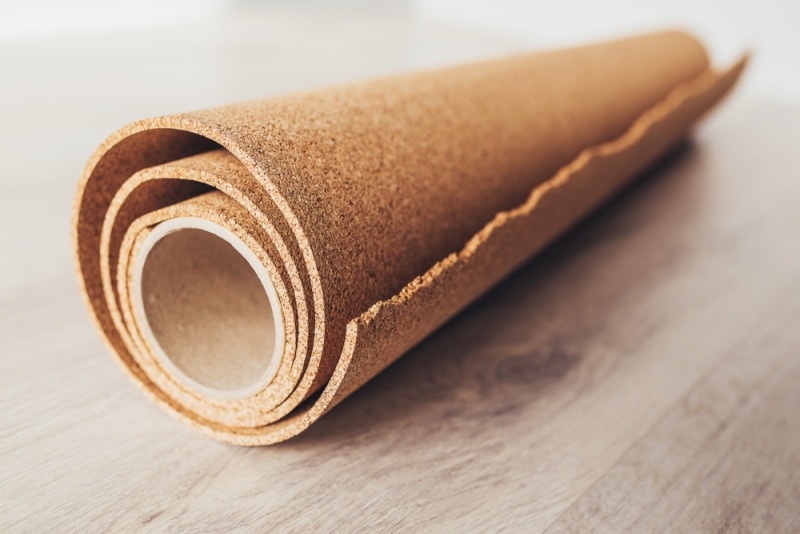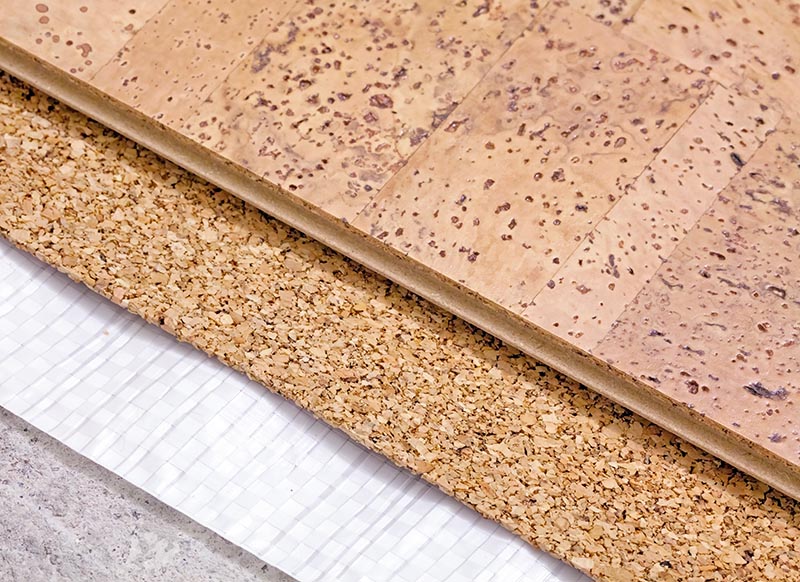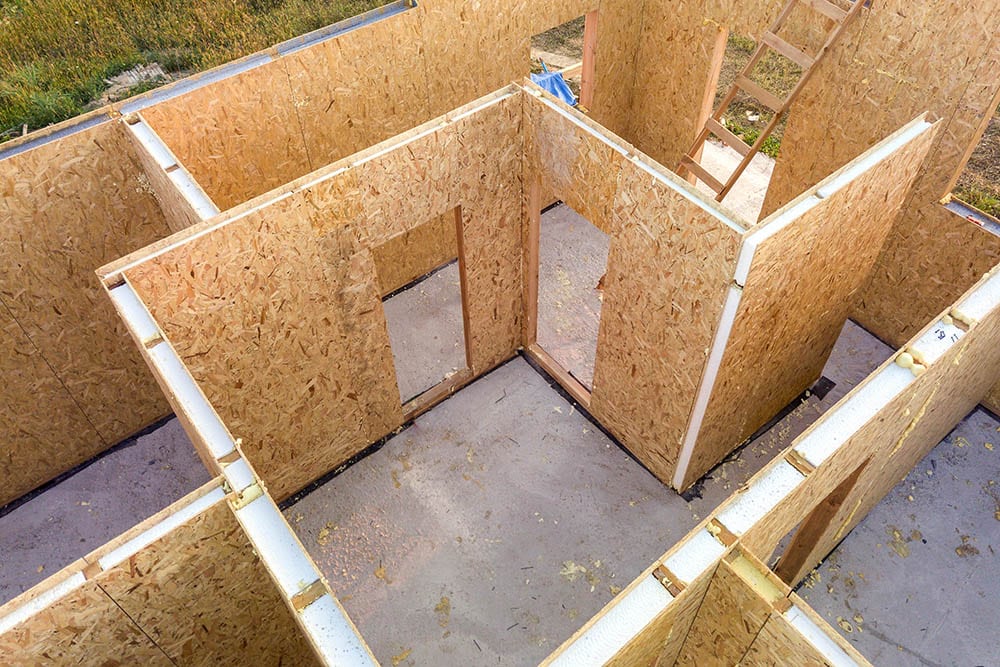Insulating With Cork: Pros, Cons & Overview (2025 Guide)
-
Pete Ortiz
- Last updated:

There are many reasons to choose cork as your insulation material. Cork is an environmentally friendly, sustainable, and renewable natural product. However, cork is not without its drawbacks.
If you are considering using cork insulation in your home, it’s important to weigh the pros and cons carefully. This guide will give you an overview of the benefits and drawbacks of cork insulation so that you can make an informed decision.
 What Is Cork Insulation?
What Is Cork Insulation?
Cork insulation is made from the bark of the cork oak tree. The bark is harvested and then ground into a powder. This powder is mixed with water and other binders to create a putty-like substance that can be molded into a variety of forms, including sheets, boards, and blocks.
It can be used as insulation for walls, floors, ceilings, and roofs. It is also used in the manufacture of corkboard and cork tiles.
Types of Cork Insulation
1. Rigid Cork Insulation

| R-value | 1/inch |
| Density | 7 to 7.5 lbs/ft3 |
| Strength | 15 psi |
This cork insulation type is made from 100% pure cork. It’s available in sheets and panels, making it very easy to work with. This type of insulation is often used on walls and ceilings.
Rigid cork insulation is also very effective at absorbing sound, making it a good choice for use in areas with a lot of noise that needs to be dampened, such as recording studios and movie theaters.
- Very effective at soundproofing
- Can be used on walls and ceilings
- 100% natural product
- One of the more expensive insulation options
- May not be as effective at heat insulation as other materials
2. Spray Cork Insulation
| Conductivity | 0.058 to 0.082 |
| Density | 7 to 7.5 lbs/ft3 |
| Strength | ~15 psi |
This type of cork insulation is made from a mixture of cork and other materials, such as recycled plastic or rubber. It’s sprayed onto surfaces using a specialized machine.
Spray cork insulation is often used on walls and ceilings, as well as on pipes and ductwork. However, you can also use it to insulate large spaces like warehouses and factories.
It’s important to note that spray cork isn’t measured with an R-value. Rather, a thermal conductivity measurement is used. The lower the measurement, the better it performs as a thermal barrier.
For comparison, a thermal conductivity rating of 0.068 is about the same as an R-14 value.
- Easy to apply
- Can be used on a variety of surfaces
- May be more expensive than other types of insulation
- Requires special equipment to apply
3. Expanded Cork Insulation
| R-value | 3.6/inch |
| Density | 7 to 7.5 lbs/ft3 |
| Strength | 15 psi |
This type of cork insulation is made from small pieces of cork that have been treated with heat and pressure to make them expand. This process makes the expanded cork insulation much lighter than other types of cork insulation, but it also makes it less effective at insulating.
Expanded cork insulation is typically used in walls and ceilings, as well as in HVAC and plumbing applications. If you’re looking for an insulation material that is light and easy to work with, expanded cork insulation may be the right choice for you.
Just be sure to make accommodations for its lower R-value when choosing this type of cork insulation.
- Lightweight
- Easy to work with
- Low R-value
 Installation Overview
Installation Overview
If you’re thinking about insulating your home with cork, you’re not alone. Many homeowners are turning to cork insulation as a more sustainable and environmentally friendly alternative to traditional materials like fiberglass and cellulose. Cork is also an excellent insulator, helping to keep your home warm in the winter and cool in the summer.
Installing cork insulation is a relatively simple process, but there are a few things you’ll need to keep in mind to ensure a successful installation. Here are a few tips for installing cork insulation:

Choose the Right Type
There are two main types of cork insulation on the market: sheets and rolls. Sheets are the most common type of cork insulation and are typically easier to install. Rolls are a bit more difficult to install but can be a good choice if you’re insulating a larger area.
Measure the Area
Before you buy your cork insulation and begin the installation process, make sure to measure the area you need to insulate. With precise measurements, you will be able to determine how much insulation you need to purchase.
Install the Cork Insulation
To install sheet-type cork insulation, simply cut the sheets to fit the area you’re insulating and then attach them to the wall or ceiling with adhesive or nails. For roll-type cork insulation, unroll the insulation and then cut it to fit the area you’re insulating. Once the insulation is cut to size, attach it to the wall or ceiling with adhesive or nails.
Seal Any Gaps
Once the cork insulation is installed, be sure to seal any gaps around seams or edges with caulk or another type of sealant. This will help prevent air leaks and help the insulation work more effectively.

Check for Air Leaks
After you’ve installed the cork insulation and sealed any gaps, it’s a good idea to check for air leaks. Use a smoke pencil or incense stick to check for drafts around doors, windows, and other openings. If you find any air leaks, be sure to seal them with caulk or another type of sealant.
Following these tips will help ensure a successful installation of cork insulation in your home. Cork insulation is an excellent choice for many homeowners due to its sustainability, environmental friendliness, and effectiveness as an insulator.
 Conclusion
Conclusion
Though cork insulation has a few disadvantages, its many benefits make it a great option for eco-conscious homeowners. If you’re looking for an insulating material that is sustainable, effective, and safe for the environment, cork could be the perfect choice for you.
Be sure to compare the different types of cork insulation before making your final decision, as the wrong product could end up costing you more in the long run. With a little research, you can find the perfect cork insulation for your home and enjoy all the benefits it has to offer.
Featured Image Credit: VanoVasaio, Shutterstock
Contents

 What Is Cork Insulation?
What Is Cork Insulation? Installation Overview
Installation Overview